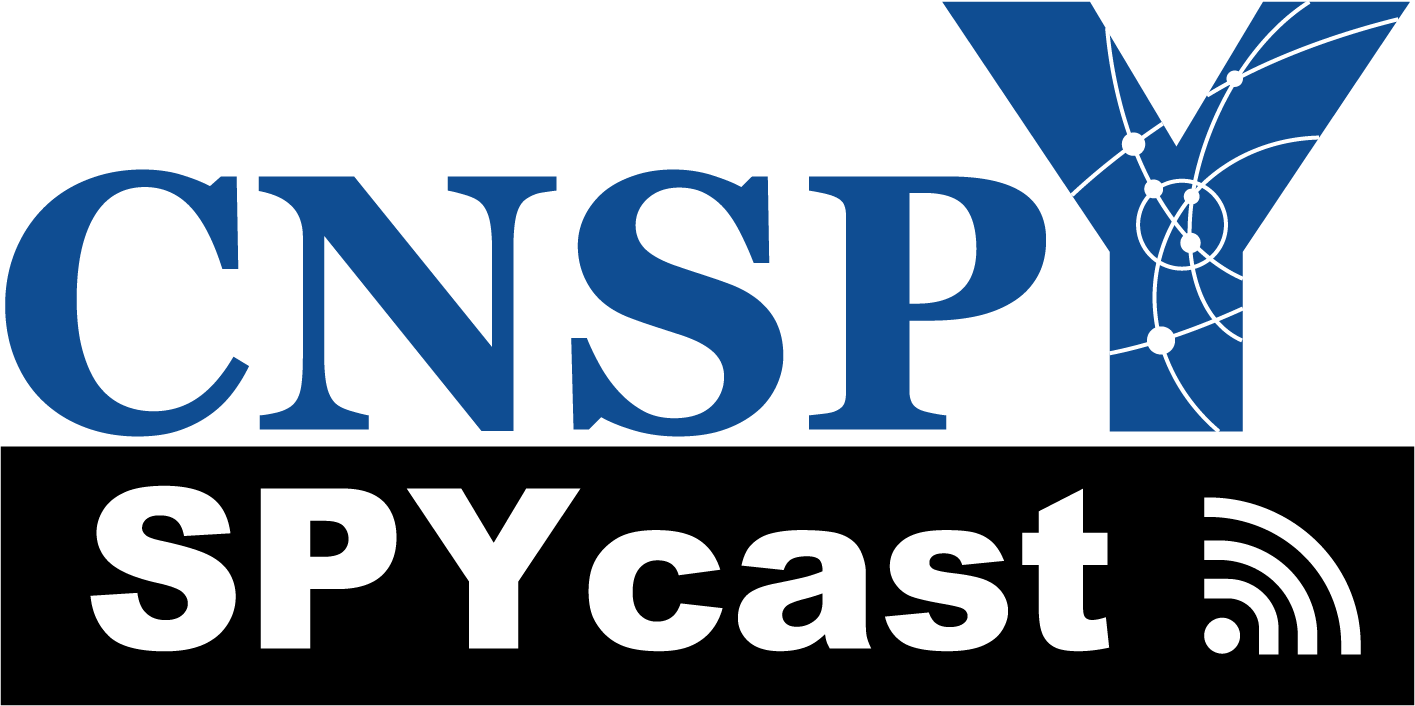This week’s blog is written by guest blogger and new member of the CNSPY Communications Team, Kristen Murfin. She shares some useful advice on how to tailor your resume to fit the job you really want. Here’s Kristen…
Did you know that a recruiter spends an average of just 6 seconds assessing your resume? A study by Ladders used eye tracking software to assess the length of time recruiters looked at resumes and what they looked at. The researchers found that in those 6 seconds, recruiters spent 80% of the time looking at the name, current title and company, previous title and company, start and end dates, and education. The remaining 20% was spent skimming (not reading!) the resume for key words and phrases that were consistent with the job posting. Most of this skimming was towards the top of the first page.
So what does this mean for the job seeker? First, your resume must be brief, easy to read, and it should be easy to find the relevant sections. Second, the most relevant and exciting material should be near the top of the first page. Third, tailoring your resume for a specific job posting will increase your chances of making it past the 6-second filter (as well as any automated filtering systems). Here are a few quick tips for how to tailor your resume:
1. Start by writing an in-depth, results-driven resume that encompasses EVERYTHING
Don’t worry if you write a three-page monster list. This is just the starting point. If you want advice on how to write your sections, check out previous CNSPY blogs here and here.
2. Research the position you are applying for
Now, do a little research (taking notes will be very helpful!). Ultimately, you want to come up with a list of skills and experiences that you can highlight on your resume. Start by reading the job description and identifying the qualifications and skills listed. You can also look at similar job postings at the same company, LinkedIn profiles of people who currently have the same job title, and job descriptions at the same or similar companies. While you are making your list take note of the key words or phrases that come up multiple times, especially in the job posting.
3. Cross-reference your list of skills with your resume
Assess which skills you have that fit the list and which ones don’t. For experiences that do fit, tweak the wording to match the key words and phrases used in the job posting. However, don’t exaggerate your accomplishments. Cut or minimize experiences that don’t directly address skills relevant to the job. You shouldn’t cut employment history that will leave a gap in your resume, but you may minimize the space given to the position (remember that space in your resume is really limited). You can also consider splitting your resume into two broad categories, “Relevant Experience” and “Additional Experience”. Here is an example modifying a graduate school experience for a project lead position at a biotech company:
Original:
Graduate Student Researcher Year XXXX-XXXX
- Studied the role of Y protein in Z cancer for the development of novel therapeutics targeting Y
- 6 peer-reviewed articles, 1 patent, and 18 presentations
- 3 fellowships, 1 NIH grant
- Mentored 4 undergraduate researchers
- Facilitated collaborations
- Teaching 2 semesters of Introduction to Molecular Biology
- Volunteered as a student host for recruitment
- Technical expertise in cell culture, molecular biology techniques, mouse husbandry, and protein analyses
Modified:
Graduate Research Fellow Year XXXX-XXXX
- Lead an investigation developing novel therapeutics for Z cancer, which resulted in 6 publications, 1 patent, and 18 presentations
- Project management for facilitating collaborations between 3 laboratories and training 4 undergraduate research students
- Secured and budgeted research funds, including 3 fellowships and 1 NIH grant
This modification is successful because it highlights leadership, management, and communication skills that are likely listed as necessary for the position. It also rewords the experience to be concise and results driven. Also note that the technical skills are removed. If the job posting doesn’t list technical skills or just gives a general area of research that is preferred, don’t provide an exhaustive list of all the assays you can perform. Stating that you have research experience in a general area is very likely enough. However, if specific technical qualifications are listed as required or preferred, you should definitely include them!
Another way to highlight your most relevant skills is to create a summary section (often called a “Qualifications Summary”) at the top of your resume. This section should distill your top 2-3 skills that demonstrate why you are the best choice. Think about: What values and key strengths do I bring? What are my top selling points? Which of these line up with the job posting? If the posting mentions a degree requirement, you can consider including that in your statement as well. An example from the same resume might be:
Medical molecular biologist with XX years of research experience and XX years of project management experience. Successful completion of a PhD from Yale University. Proven skills in management, budgeting, scientific communication, and research techniques.
This statement again highlights the leadership and management skills likely listed in the job posting. Look for more information on writing your qualifications summary in the next blog post!
4. Research the company you are applying to
In addition to the job posting, you should also research the company itself to get an idea of the corporate culture. You can also ask for an informational interview with people currently at the company to gain insight. Not only is this great information for a future interview, you can incorporate phrasing and key words about company culture into your resume. This will allow recruiters to see that you might be a good “fit” with the current team. For example, a company might be team-oriented and collaborative or fast-paced and deadline driven. You could word your experiences slightly differently based on this knowledge:
Original:
Lead an investigation developing novel therapeutics for Z cancer, which resulted in 6 publications, 1 patent, and 18 presentations
Company 1:
Lead a collaborative research team in investigating novel therapeutics for Z cancer, which resulted in 6 publications, 1 patent, and 18 presentations
Company 2:
Lead a fast-paced project for the development of novel therapeutics for Z cancer, which resulted in 6 publications, 1 patent, and 18 presentations
Be sure that modifying your wording doesn’t incorrectly represent your experience.
Remember that the point of tailoring your resume is to make yourself the ideal candidate for a particular job posting at a specific company. So, don’t use the same tailored resume for different postings. Revamp and rework your resume for each application!
**Tailor your resume and share your experience with us**
Share your thoughts below by clicking the “Leave a Reply” link or by clicking the chat bubble in the top right of the post.
References:
- Optimize Your Resume if You Want to Get the Job http://www.careercast.com/career-news/optimize-your-resume-if-you-want-get-job
- Resume Optimization Without Dishonesty: Keeping it Real http://www.youtern.com/thesavvyintern/index.php/2016/07/05/resume-optimization-keeping-real/
- What it Really Means to “Tailor Your Resume” https://www.themuse.com/advice/what-it-really-means-to-tailor-your-resume
- How to Tailor Your Resume and Gain More Job Interviews https://www.livecareer.com/quintessential/resume-tailoring
- How to Tailor Your Resume for an Employer http://money.usnews.com/money/blogs/outside-voices-careers/2011/01/19/how-to-tailor-your-resume-for-an-employer






April 24, 2018 at 1:02 am
Thank you for the information. i have now the sufficient knowledge to make my resume a really good one.
February 17, 2023 at 12:56 am
Number 1 is the conventional wisdom of extroverted networkers. Number 2 is what introverts should do.
https://www.mywatchesuk.com/
May 19, 2023 at 3:01 pm
Thank you for useful sharing.
vozol 10000
September 5, 2023 at 4:48 am
Thanks for your post.
Worldwide Discreet and Legal Online Monitoring Services.
The solution to all your concerns.
FindV offers a wide variety of exclusively online monitoring and investigative services to help you dispel all your concerns. With industry-leading software and an exhaustive knowledge of digital surveillance, the solution is only a click away.
November 10, 2023 at 1:52 am
La storia del marchio che è diventato uno status symbol è principalmente legata al suo fondatore ufficiale, il tedesco Hans Wilsdorf, iwc replica che decise di creare “Wilsdorf & Davis” a Londra nel 1905 all’età di 24 anni. Avviare la propria attività specializzandosi nella produzione di altoparlanti . Distribuzione commerciale di orologi e orologi.
November 12, 2023 at 9:16 pm
The Vingt-8 is likely the most well known Replica swiss watches Voutilainen timepiece and has been a part of the watchmaker’s catalog since 2011.
December 27, 2023 at 12:08 am
How can job seekers strategically tailor their resumes to match specific job postings and increase their chances of success? Regard Telkom University